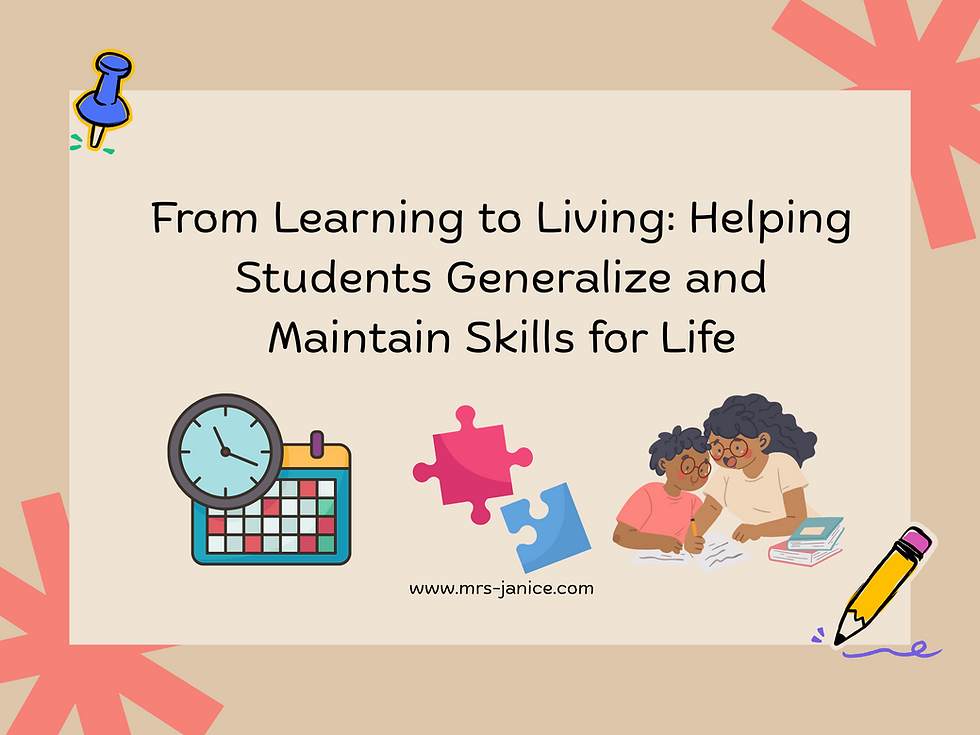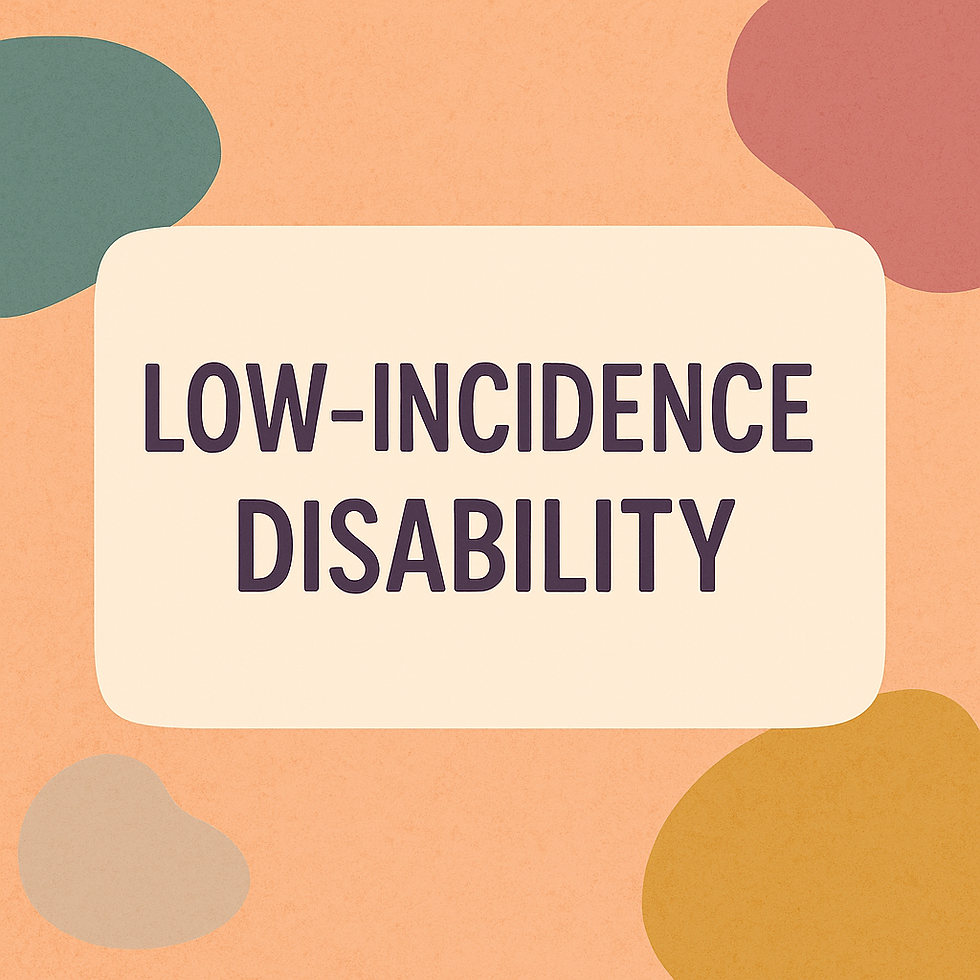From Learning to Living: Helping Students Generalize and Maintain Skills for Life
- Janice Martinez
- 11 minutes ago
- 3 min read
Hello, everyone!
As a passionate advocate in special education, I’ve come to believe that teaching a skill isn’t the finish line—it’s just the beginning. What truly matters is whether our students can use that skill meaningfully in their daily lives. For students with low-incidence disabilities, that journey from learning a skill to applying it in real-life situations often requires extra planning, care, and heart.
In this post, I want to share practical and thoughtful strategies that we, as educators and support teams, can use to help students not only acquire new skills—but hold onto them, and use them where it really counts.

What Is Skill Generalization and Why Is It So Important?
Skill generalization is when a student can take what they’ve learned in one setting—like the classroom—and use it somewhere else, like at home, in the cafeteria, or even at a job site. It’s that magical moment when the student asks for help appropriately outside of a therapy session or follows a visual schedule without prompting during a family trip.
Unfortunately, generalization doesn’t always happen on its own. Many students with disabilities need intentional support to practice and use skills across people, settings, and materials.
From Research to Real Life: Choosing the Right Strategies
No two students are the same. That’s why choosing the right teaching strategies requires both heart and science. Here are some friendly (but research-informed!) reminders:
Stay Curious: Continue learning from professional development and research. What works for one student may not work for another—but staying informed helps you make the best choices.
Start Simple: Use strategies that are natural, gentle, and respectful of the student’s dignity. Least intrusive is often best.
Know Your Student: The better you understand a student’s preferences and needs, the better you can choose the prompting systems, reinforcers, and supports that work for them.
Respect Community & Family: Choose methods that feel right not just for the school team, but for families and community members, too. Social validity matters.
Practical Strategies for Skill Generalization & Maintenance
These tried-and-true strategies can make a big difference when it comes to helping students transfer and maintain the skills they work so hard to learn:
Teach Across Settings
Try not to keep skills locked in the classroom. If you’re working on greeting peers, go practice in the hallway. If you’re teaching job skills, take it out into the community through CBVI (Community-Based Vocational Instruction).
Mix Up the People
Have the student practice with peers, other staff, or even a new paraprofessional. This helps them understand the skill applies no matter who they’re with.
Vary the Materials
Whether it's using different brands of toothpaste or switching up the type of visual schedule, variety is key. Real life isn’t identical—and practice shouldn’t be either!
Use Natural Reinforcers
Reward students with things that make sense in real life: praise, participation, independence. Reinforce when they use the skill naturally, not just during a lesson.
Teach Self-Monitoring
Let’s help students take ownership! Tools like checklists, timers, or self-reflection journals build independence and confidence.
Involve Families and Peers
Skill use skyrockets when students see those around them model and value the same behaviors. Family carryover and peer modeling are powerful tools.
Final Thoughts: Let’s Teach Beyond the Classroom
As special educators, we wear many hats—but at the heart of our work is a belief in what’s possible. I believe in helping students live their learning—at home, at school, and in the community. Skill generalization and maintenance aren’t just nice add-ons to instruction. They are part of what makes our teaching meaningful and lasting.
Let’s keep asking ourselves: Will this skill still matter in 10 years? Will the student be able to use it without me next to them? If the answer is yes, we’re on the right path.
What strategies have helped your students generalize their learning? Drop your thoughts in the comments—I’d love to learn from your experience!



Comments